It’s always a bit frustrating to newcomers and seasoned audio-video enthusiasts alike when you’re faced with that array of input and output connectors. But it helps to understand which cables to use and what kind of signals each carries.
Below is a list of AV cables with an explanation of their capabilities. Multicom carries a wide array of AV cables – the ‘best buys’ are listed below each cable variation.
See more Multicom A/V Cables
DVI Cable
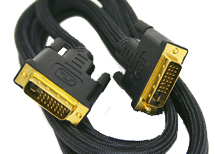 DVI (Digital Visual Interface) offers a high-bandwidth, digital-to-digital video connection that bypasses the digital-to-analog and analog-to-digital conversions necessary between components with only component video connections. Eliminating the undesirable artifacts of such conversions results in a more faithful reproduction of the original signal. DVI connections may optionally incorporate the High Definition Content Protection (HDCP) protocol, enabling them to pass copy-protected digital broadcast content (if this capability is present, it’s usually indicated by the designations “DVI-HDCP” or “DVI with HDCP”)
DVI (Digital Visual Interface) offers a high-bandwidth, digital-to-digital video connection that bypasses the digital-to-analog and analog-to-digital conversions necessary between components with only component video connections. Eliminating the undesirable artifacts of such conversions results in a more faithful reproduction of the original signal. DVI connections may optionally incorporate the High Definition Content Protection (HDCP) protocol, enabling them to pass copy-protected digital broadcast content (if this capability is present, it’s usually indicated by the designations “DVI-HDCP” or “DVI with HDCP”)
Steren 506-906 6 Ft. Single Link DVI-D Cable – 18 pin
Steren 506-956 6 Ft. Dual Link DVI-D Cable – 24 pin
HDMI Cable
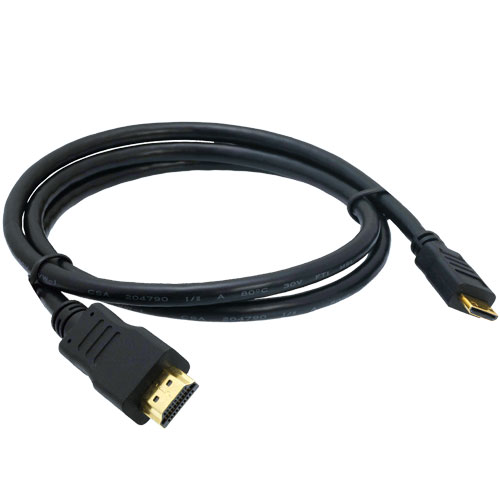 Essentially a more evolved version of DVI, HDMI (High-Definition Multimedia Interface) adds digital audio transmission to provide a convenient, one-cable solution to digital A/V connectivity. It offers significantly greater bandwidth than DVI, enabling it to transmit higher-definition uncompressed digital video signals, and establishes a platform for the transfer of future as well as current display formats. And it does all this using a single cable, with a smaller, sleeker connector than DVI. Unlike DVI, all HDMI connections are equipped with the High Definition Content Protection (HDCP) protocol, enabling them to pass copy-protected digital broadcast content.
Essentially a more evolved version of DVI, HDMI (High-Definition Multimedia Interface) adds digital audio transmission to provide a convenient, one-cable solution to digital A/V connectivity. It offers significantly greater bandwidth than DVI, enabling it to transmit higher-definition uncompressed digital video signals, and establishes a platform for the transfer of future as well as current display formats. And it does all this using a single cable, with a smaller, sleeker connector than DVI. Unlike DVI, all HDMI connections are equipped with the High Definition Content Protection (HDCP) protocol, enabling them to pass copy-protected digital broadcast content.
There are two categories of HDMI cable: Standard (category 1) and High-Speed (category 2).
Standard (or category 1) cables have been tested to perform at speeds of 75Mhz, which is the equivalent of a 1080i signal. Therefore, a standard, category 1 cable is sufficient for HD televisions up to 1080i. But what about 1080p and higher? For that, you’ll want a high-speed, category 2 cable.
High-Speed (or category 2) cables have been tested to perform at speeds of 340Mhz, which is the highest bandwidth currently available over an HDMI cable and can successfully handle 1080p signals including those at increased color depths and/or increased refresh rates. High-Speed cables are also able to accommodate higher resolution displays, such as WQXGA cinema monitors (resolution of 2560 x 1600).
HDMI is backward-compatible with DVI, meaning that if your source component is equipped with a DVI connection and your display has HDMI (or vice-versa), you’ll be able to convert the video portion of the signal via an adapter, while maintaining the integrity of all-digital signal transfer. However, since DVI makes no provision for audio signals, you’ll need to establish separate audio connections when converting from either connection to the other.
Steren – 517-306BK- HDMI Jumper Cable, 6 FT
Component Video Cable
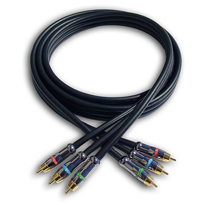 Though inferior to the digital connections listed above, component video is superior to both S-video and composite video because it provides improved color purity, superior color detail, and a reduction in color noise and NTSC artifacts. The 3-plug video output of a DVD player sends/receives the luminance (Y) and 2 color signals, each on a separate colored RCA cable.
Though inferior to the digital connections listed above, component video is superior to both S-video and composite video because it provides improved color purity, superior color detail, and a reduction in color noise and NTSC artifacts. The 3-plug video output of a DVD player sends/receives the luminance (Y) and 2 color signals, each on a separate colored RCA cable.
Steren – 254-506IV – Component Video Cable, 6 foot
S-Video Cable
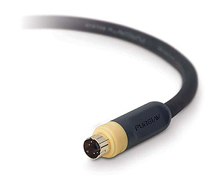 An S-video connection is much better than a composite video connection, but it is not as good as component video. This higher quality video input/output segregates chrominance (color) and luminance (light) signals for excellent reproduction from high-quality video sources such as S-VHS, Hi8 and DVD players.
An S-video connection is much better than a composite video connection, but it is not as good as component video. This higher quality video input/output segregates chrominance (color) and luminance (light) signals for excellent reproduction from high-quality video sources such as S-VHS, Hi8 and DVD players.
ASKA CSVH-6 S-VIDEO PATCH CORD, 6’
J-SVIDEO-4 S VIDEO JUMPER, 4′
Optical Digital Audio Cable
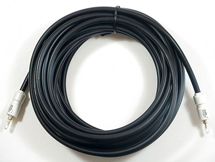 Making a digital connection (optical or coaxial) between your receiver and DVD player or CD player is a great option. A digital stream sends unprocessed sound information to your receiver (which, as a general rule, has a better digital-to-analog signal processor than a DVD or CD player) to be decoded and amplified. (In the case of SACD or DVD-Audio players, a 5.1-channel analog connection is necessary.) An optical digital connection sends signals in the form of light, as opposed to electrically. Optical cables have the advantage of being immune to EM and RF interference.
Making a digital connection (optical or coaxial) between your receiver and DVD player or CD player is a great option. A digital stream sends unprocessed sound information to your receiver (which, as a general rule, has a better digital-to-analog signal processor than a DVD or CD player) to be decoded and amplified. (In the case of SACD or DVD-Audio players, a 5.1-channel analog connection is necessary.) An optical digital connection sends signals in the form of light, as opposed to electrically. Optical cables have the advantage of being immune to EM and RF interference.
ASKA CTLK-6 OPTICAL TOSLINK AUDION CABLE, 6’
RCA Audio/Video Cable (Analog)
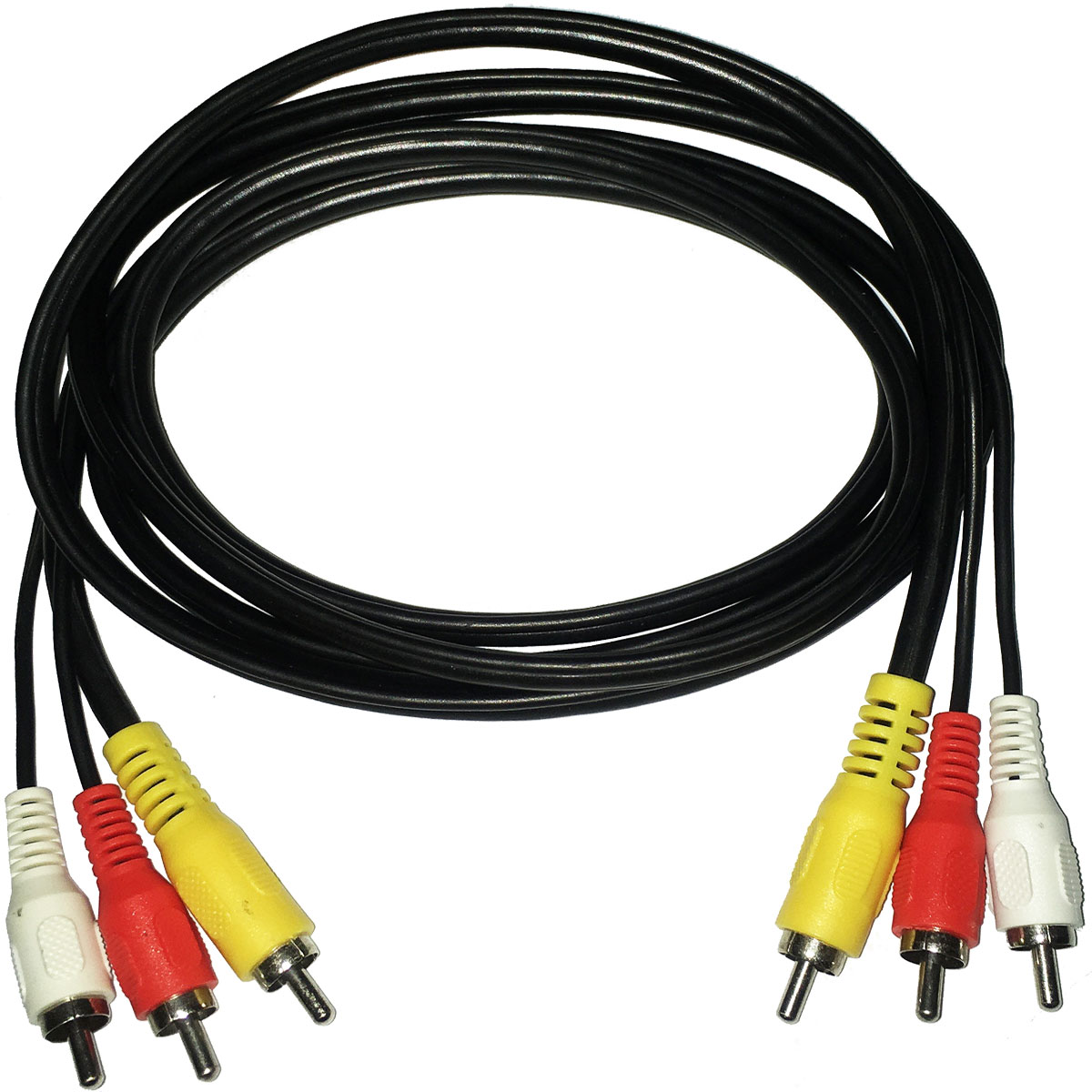 Stereo audio cables provide basic 2-channel analog audio connectivity between your VCR, CD player or DVD player and your home theater receiver (or the audio inputs on your stereo TV, in the case of your DVD player or VCR, if you don’t have a receiver). They provide a better signal transfer than coaxial RF A/V connections, but a digital connection is vastly superior.
Stereo audio cables provide basic 2-channel analog audio connectivity between your VCR, CD player or DVD player and your home theater receiver (or the audio inputs on your stereo TV, in the case of your DVD player or VCR, if you don’t have a receiver). They provide a better signal transfer than coaxial RF A/V connections, but a digital connection is vastly superior.
Note: 3 pairs of high-quality stereo audio cables can also be used to connect high-resolution multichannel audio players (SACD or DVD-Audio) to 5.1-channel inputs provided for this purpose on certain receivers.
Multicom RCA Cables:
ASKA CRR-6B DUAL RCA STEREO CABLE, 6’
ASKA – CSD-6B – RCA Jumper, 6 FT
PICO MACOM JRR-6 RCA to RCA AUDIO VIDEO CABLE, 6′
Coaxial A/V Cable/Patchcords
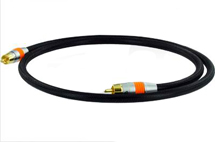 Coaxial A/V cable (also know as RF cable) connects your cable box or digital satellite box to your TV. It can also be used to connect a VCR to your TV (but composite or better A/V cables are preferable). If your TV only has coaxial RF inputs, you can use a video switcher and RF modulator to hook up advanced sources like DVD players or home gaming systems (but picture and sound quality is not nearly as good as with composite, S-video or component video connections).
Coaxial A/V cable (also know as RF cable) connects your cable box or digital satellite box to your TV. It can also be used to connect a VCR to your TV (but composite or better A/V cables are preferable). If your TV only has coaxial RF inputs, you can use a video switcher and RF modulator to hook up advanced sources like DVD players or home gaming systems (but picture and sound quality is not nearly as good as with composite, S-video or component video connections).
Multicom has a wide variety of Coax Cable Jumpers ranging from 1 to 100 feet in length – at unbeatable prices! We will also make custom lengths for your specific application.
Cat5/6 Cable
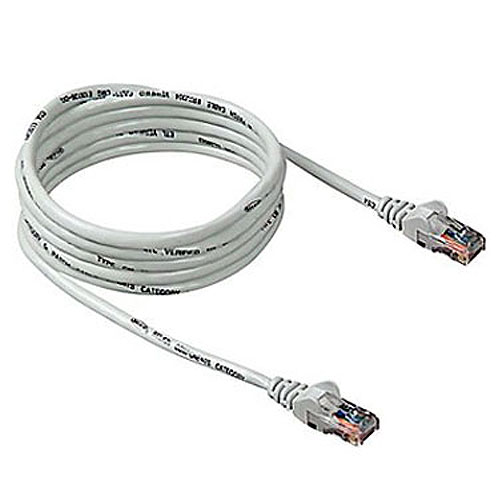 Category 5, 5e and 6 cables are high-speed data cables used for Internet connections and home networking, specifically with IP (Internet Protocol)-based home networks. Category 5 (or Cat 5) has a bandwidth of 100 MHz for networks up to 100 Mbps, and Cat 6 has 200 MHz and is recommended for Gigabit Ethernet (1,000 Mbps). Cat 5e is an enhanced version of Category 5. They require an Ethernet jack (RJ-45).
Category 5, 5e and 6 cables are high-speed data cables used for Internet connections and home networking, specifically with IP (Internet Protocol)-based home networks. Category 5 (or Cat 5) has a bandwidth of 100 MHz for networks up to 100 Mbps, and Cat 6 has 200 MHz and is recommended for Gigabit Ethernet (1,000 Mbps). Cat 5e is an enhanced version of Category 5. They require an Ethernet jack (RJ-45).
IEEE1394 – Firewire Cable
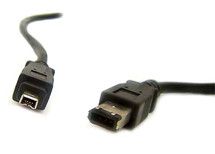 IEEE1394 (or FireWire or i.LINK) is a flexible digital connection that can pass HDTV signals using MPEG2 video to devices such as high-definition D-VHS recorders. It also supports daisy-chaining.
IEEE1394 (or FireWire or i.LINK) is a flexible digital connection that can pass HDTV signals using MPEG2 video to devices such as high-definition D-VHS recorders. It also supports daisy-chaining.
See more Multicom A/V Cables
